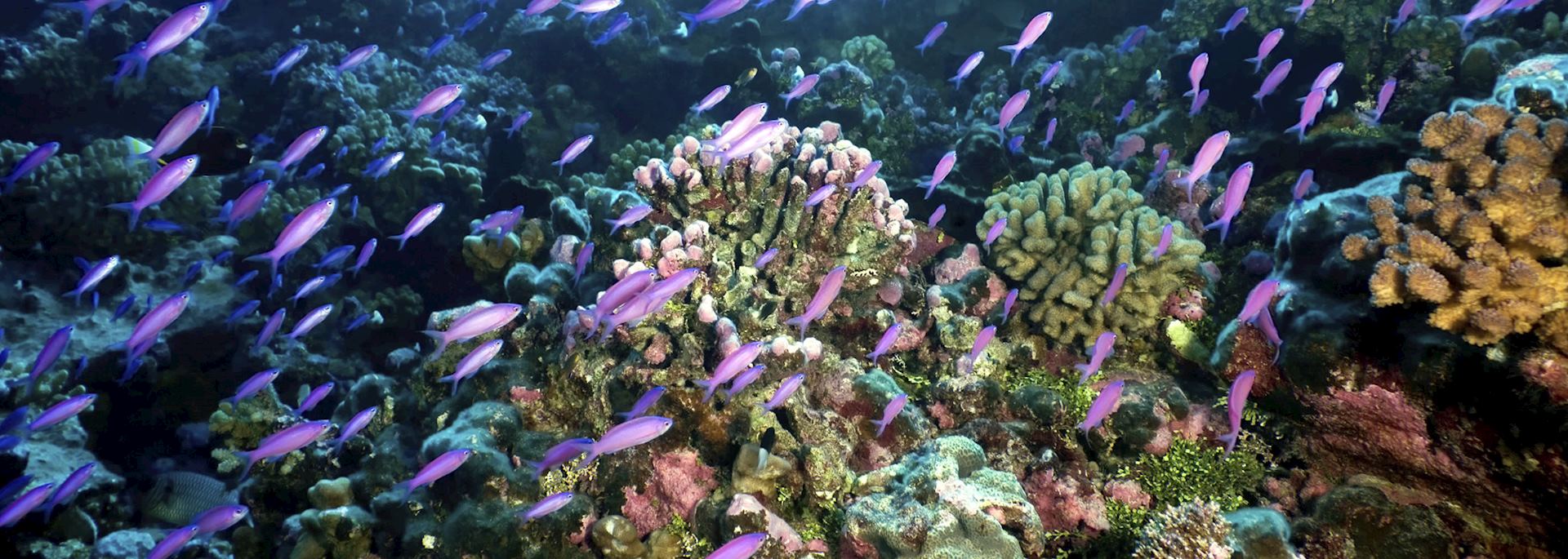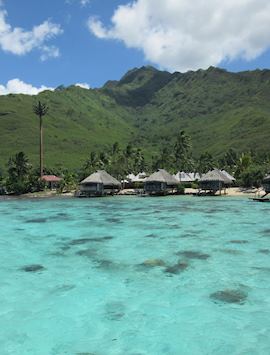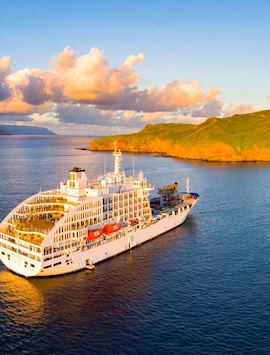French Polynesia is at its best between June and August when the climate is at its driest and the weather is balmy, sitting comfortably in the high 20s to mid 30s Celsius. However, this can be a slightly busier time of year and the months either side of this period can see comfortable temperatures, but lower prices.
French Polynesia can be visited year-round, but the months of November to April see tropical showers passing at greater frequency than other times of the year. However, they are often interspersed with periods of sunshine. This is a humid time of year, though, which can be uncomfortable and we recommend choosing a hotel with air-conditioning if visiting during these months. The islands rarely suffer from tropical storms except during years when El Niño affects ocean currents.
Month-by-month guide for travelling in French Polynesia
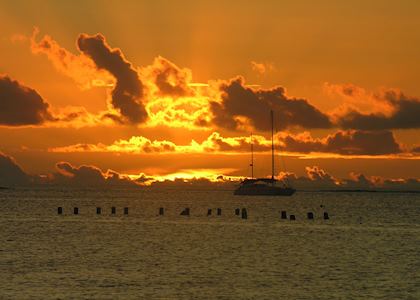
Visiting French Polynesia in January - April
By the start of the year the wet season is firmly established in French Polynesia, and the rain does not abate until April. However, more rain means emptier hotels, competitive rates, and far fewer visitors. Chinese New Year, which varies year on year but is generally mid-January to mid-February, sees the islands celebrating with parades, music and dancing.
Events & Festivals
- The French Polynesian Chinese community in Tahiti celebrates the beginning of the Chinese New Year in either January or February depending on the year. Music, dancing and parades pervade the islands.
- In April the Ori Tahiti Festival takes place focusing on the theme of traditional Polynesian dance.
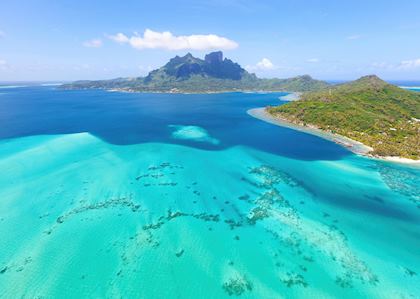
Visiting French Polynesia in May
The humidity begins to drop and rainfall starts to ease, but prices remain low and the islands maintain an overall quieter feel — for this reason this is often seen as a great time to visit French Polynesia.
Events & Festivals
- In May, the Papenoo region of Tahiti holds the Matari'i Raro, also known as the Pleiades Festival, which marks the end of the harvest period, the beginning of the austral winter and the dry season.
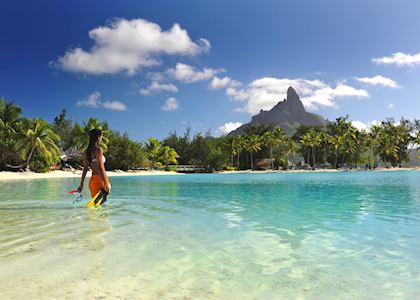
Visiting French Polynesia in June - August
French Polynesia has many of its own festivals to celebrate, such as Heiva i Bora Bora in July; an annual singing, dancing and sports competition. The season's balmy weather, combined with the traditional holiday period make this the most popular time to travel, but this means that hotels can fill up months in advance as both foreign visitors and locals flock to the smaller islands.
Events & Festivals
- Heiva i Bora Bora takes place in July and is held in Vaitape on Bora Bora. This annual festival incorporates singing, dancing and a traditional sports competition.
- Designed as an interactive event between visitors, sailors and residents, the Tahiti Moorea Sailing Rendez-Vous takes place over three days in July. The first day is in Tahiti with welcoming events, the second is a sailing rally and the last day is held on Tahiti’s sister island Moorea, where a variety of Polynesian-style competitions take place.
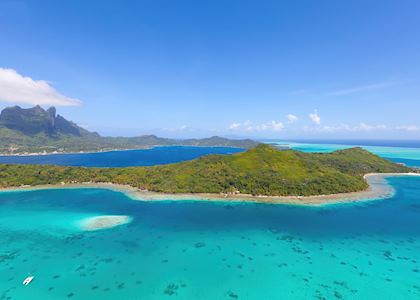
Visiting French Polynesia in September - October
Humidity begins to creep up as September and October progress, but the climate overall remains pleasant and the islands are quieter. Late September marks the spring equinox, when the sun’s rays hit the islands' lagoons at just the right angle, bringing out the vivid turquoise hues of the classic French Polynesian landscape.
Events & Festivals
- The HMS Bounty dropped anchor in October 1789 in Matavai Bay, Tahiti. The ship was on a mission to collect young bread fruit trees for the British Empire, but the operation was never completed following a crew mutiny and destruction of the ship. Every October, this epic event is re-interpreted and a replica of the Bounty is built.
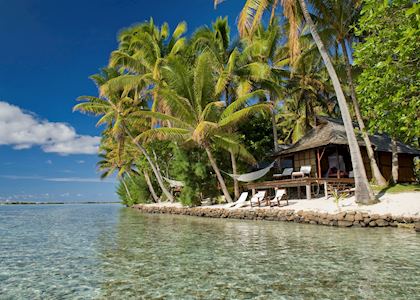
Visiting French Polynesia in November - December
November to April is French Polynesia's wet season, with concentrated bursts of rainfall punctuated by days of sunshine. At this time hotel air-conditioning becomes a necessity as humidity rises. However, it is possible to use French Polynesia's geography to your advantage; the Marquesas are closer to the Equator and are far enough north to benefit from the trade winds that temper the climate.
French Polynesia Climate Guide
| Destination | Jan | Feb | Mar | Apr | May | Jun | Jul | Aug | Sep | Oct | Nov | Dec |
|---|---|---|---|---|---|---|---|---|---|---|---|---|
| Bora Bora | 30°C 269mm | 30°C 235mm | 31°C 202mm | 30°C 143mm | 29°C 148mm | 28°C 104mm | 28°C 96mm | 28°C 74mm | 28°C 84mm | 29°C 126mm | 30°C 228mm | 30°C 291mm |
| Marquesas Islands | 30°C 110mm | 30°C 104mm | 30°C 145mm | 30°C 146mm | 29°C 122mm | 29°C 178mm | 28°C 137mm | 28°C 116mm | 29°C 74mm | 30°C 82mm | 30°C 77mm | 31°C 88mm |
| Moorea | 29°C 326mm | 29°C 243mm | 30°C 204mm | 29°C 148mm | 28°C 116mm | 27°C 75mm | 27°C 73mm | 27°C 61mm | 27°C 63mm | 28°C 104mm | 28°C 174mm | 29°C 314mm |
| Tahiti | 26°C 364mm | 26°C 282mm | 26°C 245mm | 26°C 202mm | 25°C 154mm | 24°C 108mm | 23°C 109mm | 23°C 94mm | 24°C 96mm | 25°C 140mm | 25°C 218mm | 26°C 361mm |
| Tuamotu Islands | 30°C 218mm | 30°C 174mm | 30°C 133mm | 30°C 125mm | 30°C 86mm | 29°C 93mm | 28°C 72mm | 28°C 65mm | 28°C 81mm | 29°C 123mm | 30°C 187mm | 30°C 208mm |
Why travel with Audley?
- 100% tailor-made tours
- Fully protected travel
- Established for over 25 years
- 98% of our clients would recommend us
Travel advice
Practical tips for travelling to French Polynesia, from social protocols to guidance on money matters, with a link to the latest FCDO travel advice.

Request our brochure
Covering all seven continents, The World Your Way shows you how you can see the world with us. It features trip ideas from our specialists alongside hand-picked stays and experiences, and introduces our approach to creating meaningful travel experiences.
Trip ideas and travel guides for exploring French Polynesia
-
![Hilton Moorea Lagoon Resort & Spa]()
-
![Bora Bora from the air]()
-
![Aranui V, Tahiti]()
-
Cruises in French Polynesia ![Aranui V, Tahiti]()
Cruises in French Polynesia
Cruises in French Polynesia
Read this guide
